H.R. Giger
Posted by Darkness on March 20, 2009 (Updated: 06-Sep-2023)
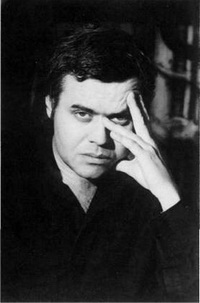 H.R. Giger was born February 5, 1940 in Switzerland and is a well-known painter, sculptor, and set designer best known for his work on the film Alien.
H.R. Giger was born February 5, 1940 in Switzerland and is a well-known painter, sculptor, and set designer best known for his work on the film Alien.
Alien (1979)
Giger was originally brought onto Alien by writer Dan O’Bannon. They both had worked for Alexandro Jodorowsky when they were making Dune, which was later cancelled. O’Bannon contacted Giger in August 1977 and asked him to design the monsters for Alien. Giger made a few paintings and some sketches based on the story he was told over the phone. At this point, it wasn’t decided if Giger was to continue on the project.
20th Century Fox was wary of hiring Giger because they thought his paintings and designs could be too disturbing for audiences. Ridley Scott came aboard as director and was given a copy of Giger’s new book ‘Necronomicon’ and became fascinated by it. In February 1978, Ridley Scott travelled to Zurich to meet Giger to discuss the project. Giger then started coming up with designs and later travelled to Shepperton Studios in London to work intensively on the film’s sets and special effects.
Giger designed the alien planet, the landscape, the derelict spacecraft, the interior and exterior, the Space Jockey, and the egg chamber below. He was also responsible for creating the different stages of the alien life cycle: the Egg, Facehugger, Chestburster and adult Alien. The cocoon sequence which was cut out of the theatrical release (later added in the director’s cut) was also designed by Giger.
The Planet, The Derelict Spacecraft & Space Jockey
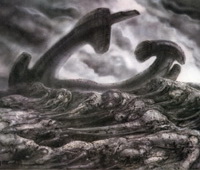 The planet and landscape were made out of a mixture of bones and tubes in order to achieve ‘biomechanics’. Giger wanted to create the impression that something may have happened a long time ago on that planet like a highly-advanced civilization has been wiped out for some reason. Unfortunately, most of the landscape footage was cut out by Ridley Scott. Giger had made a lot of models, but very few were actually executed full-size. Due to lack of time, the one made for the landscape is not really biomechanical. There’s only one scene where a model is used for the landscape which is when you see the three characters with the derelict in the background.
The planet and landscape were made out of a mixture of bones and tubes in order to achieve ‘biomechanics’. Giger wanted to create the impression that something may have happened a long time ago on that planet like a highly-advanced civilization has been wiped out for some reason. Unfortunately, most of the landscape footage was cut out by Ridley Scott. Giger had made a lot of models, but very few were actually executed full-size. Due to lack of time, the one made for the landscape is not really biomechanical. There’s only one scene where a model is used for the landscape which is when you see the three characters with the derelict in the background.
The derelict spacecraft is a great example of Giger’s work. It looks almost organic in nature which is what he was aiming for. Giger was mostly happy with the design. He didn’t have a lot of time and money. In still photos, there’s a lot more detail on the derelict than what you can see on screen. The model of the entire derelict was about four metres and the landscape took up the whole studio. The ship is made of plasticene and polystyrene over metal arms. The entrance to the derelict was built full-scale on a sound stage. The curved openings were built from timber covered with webbing. Final layers of plaster were added to the openings by Giger and then the surfaces were painted.
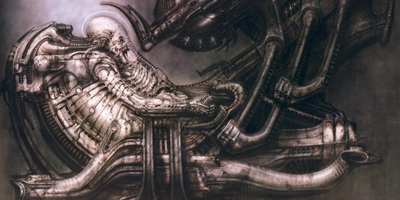
The space jockey creature was said to be based upon one of Giger’s paintings called Necrinom V. If you look at the top-left part of Necrinom V, it resembles the space jockey’s head. Giger modelled the space jockey himself in clay which was then cast in polyester. He worked a lot on the head and painted it. Initially, 20th Century Fox did not want to spend the money for such an expensive set that would only be used for one scene. The production team was able to convince the studio that the scene was important to impress the audience.
To save money only one wall of the set was created, and the space jockey sat at the top of a disc that could be rotated to help get shots from different angles. Giger airbrushed the entire set and the space jockey by hand. The egg chamber that was below the space jockey was originally going to be inside a pyramid. You can see one of Giger’s early drawings was of an Egg Silo. This was changed for budget reasons and so the derelict and egg chamber were merged into one. The floor of the chamber with the alien eggs and the section of wall above it were fully constructed for the scene. When the scene shows Kane descending into the egg chamber, the chamber is a matte painting.
The Alien Life Cycle
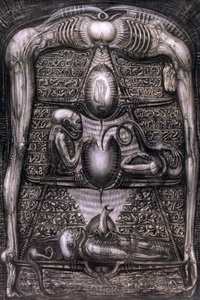 The alien egg was constructed from various plastics using Giger’s paintings as a reference. In O’Bannon’s script, the top of the egg wasn’t organic, but completely mechanical. Giger wasn’t fond of that and initially designed the eggs with a much more obvious vaginal appearance. The producers complained that they would have problems with the censorship board and Catholic countries would ban the film if it was too obvious. Giger then changed the top of the egg so that it resembled a crucifixion cross.
The alien egg was constructed from various plastics using Giger’s paintings as a reference. In O’Bannon’s script, the top of the egg wasn’t organic, but completely mechanical. Giger wasn’t fond of that and initially designed the eggs with a much more obvious vaginal appearance. The producers complained that they would have problems with the censorship board and Catholic countries would ban the film if it was too obvious. Giger then changed the top of the egg so that it resembled a crucifixion cross.
The facehugger itself was the first creature that Giger designed for the film which went through many different versions. To start with, it was really big, had eyes and a spring-like tail so it could jump out of an alien egg. It was redesigned so it was small enough to wrap around a victim’s face. Writer Dan O’Bannon made his own version based on Giger’s design which became the final version.
O’Bannon originally thought the facehugger would resemble an octopus with tentacles. When Giger made his designs, he decided to have finger-like digits instead of tentacles which worked a lot better. Giger’s initial design had the fingers facing forward but when O’Bannon redesigned it, he moved the fingers to the side. O’Bannon decided to design the facehugger prop himself and the technical elements of the facehugger were added by Ron Cobb. The prop was left unpainted so that it resembled human skin. Giger also made his own facehugger that had a skeleton inside that you could see through its translucent skin but there wasn’t enough time to finish it.
Giger’s original chestburster design looked more like a plucked chicken and was far too large to fit inside a ribcage. It had to be completely redesigned. Ridley Scott made a few alternate designs for the chestburster. Its arms and legs were removed and all that was left was the head and tail to create a phallic-like creature you see on screen. Roger Dicken was given the task to design it.
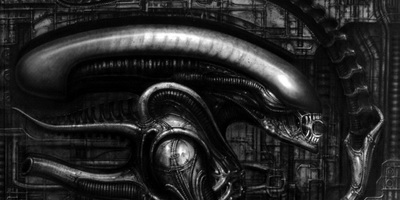
The adult alien design was based on a painting Giger made in 1976 called Necrinom IV which was featured in his book. Giger initially offered to completely design the alien from scratch, but director Ridley Scott insisted that he base his design on Necronom IV. Giger made several conceptual paintings of the adult Alien before creating the final version. Giger’s alien is often described as biomechanical which is a stylistic representation of organic matter and machines fused together.
Originally, the creature had big black eyes but then Giger figured it would be more frightening if the creature didn’t have any eyes at all so you wouldn’t know if it was looking at you. Giger also gave the alien’s mouth a second inner set of jaws which could extend rapidly and could be used as a weapon. He sculpted the creature’s body using plasticene and used real bones for the rib cage along with tubes and piping. Then he made the suit out of rubber for a stuntman to wear. The alien’s animatronic head was designed and constructed by special effects designer Carlo Rambaldi who followed Giger’s designs closely.
Legacy
Alien brought H.R. Giger international recognition for his unique style of art and design. It also earned him the Academy Award in 1980 for “Outstanding Achievement in Visual Effects”. Giger was responsible for creating one of the most terrifying creatures in cinematic history and many people believe, including myself, that Alien simply wouldn’t have been has successful as it was, had it not been for Giger’s contribution.
Aliens (1986)
H.R. Giger was not asked to return for the sequel. At this time, Giger was working on Poltergeist II. Giger expressed his disappointment at not being asked to return to the sequel by writing to director James Cameron. Cameron later responded and explained that he wanted to put his ‘own unique stamp’ on the movie. He had his own ideas and concepts that he wanted to use. You can read Cameron’s letter on H.R. Giger’s website. Giger enjoyed James Cameron’s movie for what it’s worth. He liked some of the new alien designs, particularly the Queen Alien. He didn’t like the warrior drones, however, which had been updated for the movie. Instead of the smooth head, the creature had in the first Alien, their heads had ridges. Giger stated they looked cheaply made because they lacked the translucent shell on their head.
Alien 3 (1992)
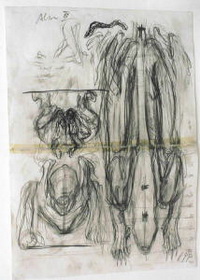 As we all know, Alien 3 had its fair share of problems during its production. It went through various directors and scripts. At one point, Fox had chosen Vincent Ward as the director and the studio was going to go with his script which was set on a wooden planet. Ward visited Giger in Zurich to share ideas. Giger wasn’t officially involved in production at that point, though he prepared sketches and drawings to try and visualize Ward’s script. Vincent Ward eventually left production and David Fincher took his place.
As we all know, Alien 3 had its fair share of problems during its production. It went through various directors and scripts. At one point, Fox had chosen Vincent Ward as the director and the studio was going to go with his script which was set on a wooden planet. Ward visited Giger in Zurich to share ideas. Giger wasn’t officially involved in production at that point, though he prepared sketches and drawings to try and visualize Ward’s script. Vincent Ward eventually left production and David Fincher took his place.
Producer Gordon Carroll officially asked H.R. Giger to work as a designer on Alien 3 in July 1990. Shortly after that, director David Fincher and producer Gordon Carroll visited Giger in Zurich to discuss his contract. They couldn’t work out a new contract so Giger suggested they base their agreement upon the original contract from Alien as a compromise.
David Fincher didn’t have a final script but Giger was asked to reinvent the alien creature for the movie and received the chance to correct the ‘problems’ with the alien design in James Cameron’s sequel. Giger was obviously very enthusiastic about the project. Because of the close relationship Giger had with Ridley Scott on the first movie, he hoped he would have the same relationship with David Fincher.
Giger was originally committed to the following designs: an aquatic Facehugger, a Chestburster, alien skin and a four-legged version of the adult Alien. The adult alien was a fast-moving and graceful predator that David Fincher compared to a puma. Giger removed the large pipes from the alien’s back and then created a complex new head design with a translucent skull. He designed a conical tongue covered with barbed hooks that would rip into and tear apart a victim. Lion-like claws also were incorporated between the creature’s fingers, making the alien more cat-like. Giger also designed a new ‘Super’ Facehugger which was based on an old design. In an early version of the script, the Facehugger was swimming so he visualized how it could move – its fingers would retract so that it would crawl just under the water’s surface. Giger faxed sketches, plans and photos of models to Pinewood on a daily basis, and Fincher faxed his comments in return.
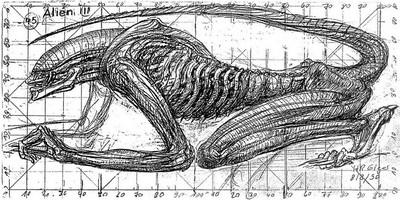
ADI duo, Alec Gillis and Tom Woodruff, who were responsible for the execution of the creatures in Alien 3, told Giger over the telephone that they had their own ideas as far as the alien design was concerned. Giger was confused by this and believed there was only one interpretation and that was his own designs for the creature. Giger’s involvement with the production lasted just one month. Once all of Giger’s designs were submitted, the production severed contact. Presumably, because the studio was in a rush to make the movie in time for the release. Despite this, Giger continued to fax ideas to Fincher because of his enthusiasm for the project.
Giger also made full-scale drawings, a short reference film and, at his own cost, had an alien on a one-to-one scale built in the basement of his Zurich house to better study the proportions and be able to draw more accurate plans. He offered the sculpture to the studio for just the cost of the mold but they declined. He found out later that ADI had been contracted for the design of the creature as well as the execution. ADI had wanted to do their own version of the alien and Giger felt they didn’t appreciate his work. He believed the studio felt that ADI’s ideas were better suited to the screenplay than his own.
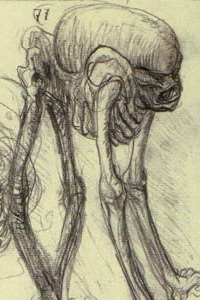 During this time, Fox was trying to pass off a simple work-for-hire contract on Giger, despite what was originally agreed. This led to the involvement of Giger’s lawyer. Giger finally won the merchandising royalties after paying a lot of money in legal fees, which the studio initially refused to reimburse. Fox did eventually reimburse Giger, but only after he refused to be interviewed for their behind-the-scenes documentary of Alien 3.
During this time, Fox was trying to pass off a simple work-for-hire contract on Giger, despite what was originally agreed. This led to the involvement of Giger’s lawyer. Giger finally won the merchandising royalties after paying a lot of money in legal fees, which the studio initially refused to reimburse. Fox did eventually reimburse Giger, but only after he refused to be interviewed for their behind-the-scenes documentary of Alien 3.
The movie was moving closer to its summer 1992 theatrical release date. Fox organized a screening for Giger’s friends and co-workers and Giger was shocked by the credit he saw on the screen. The only credit Giger received was the ‘Original Alien Design’ credit. Giger believed the additional credit of ‘Alien Effects Designed and created by Alec Gillis and Tom Woodruff Jr.’ gave everybody the impression that he never even worked on the movie.
Immediately Giger contacted Fox but they explained that all press material had been produced and it was too late to make any changes now. Tom Woodruff and Alec Gillis also downplayed Giger’s contribution to the movie in various press interviews, even saying that their alien was the “true” version and was superior to Giger’s alien design. After a second screening for the press on September 3, 1992, Giger realized that his name was also missing from the movie’s end credits.
Fox acknowledged their mistake and suggested to Giger that they would run ads in trade publications praising Giger’s work on Alien 3. Giger rejected this suggestion. After a while, the studio gave in and promised to go back and make changes to the master negative of the film, even though the prints had already been shipped. Credits on the subsequent video releases have the ‘Original Alien Design by H.R. Giger’ credit as well as an ‘Alien 3 Creature Design by H.R. Giger’ credit.
The problems weren’t over yet. Giger was shocked once again when the Academy overlooked his work in the film. Giger received an Academy Award in the effects category in 1980 for his work in Alien thanks to director Ridley Scott including Giger’s name as a nominee. Giger was under the impression the same thing would happen again with David Fincher. Fox pointed out that they weren’t allowed to submit nominees directly to the Academy. They were aware David Fincher prepared the nomination but it occurred outside of Fox’s control. It’s up to the director to choose nominees and Fincher offered no explanation for Giger’s omission.
So despite all the problems Giger encountered with Alien 3, what did he think of the movie? He liked the movie. He said the sets were atmospheric but he felt it was too dark in some scenes. He was disappointed with the alien design because it hadn’t changed that much from previous movies. But he does prefer the alien design in Alien 3 to the ones seen in Aliens. Giger said that he liked the point-of-view action sequences with the alien chasing after its victims.
Alien Resurrection (1997)
H.R. Giger wasn’t asked to work on Alien Resurrection. The ‘controversy’ surrounding this movie was that Giger didn’t receive the ‘Original Alien Design’ credit. Giger expressed his disappointment and stated the creatures in Alien Resurrection were closer to his original design in Alien than the ones that appeared in Aliens and Alien 3. 20th Century Fox never made it clear why they felt it necessary not to credit Giger in Resurrection though they later offered him the ‘Original Alien Design’ credit in the subsequent video releases.
Alien vs Predator Movies (2004 & 2007)
Giger again wasn’t involved in either Alien vs Predator movie but he did get the ‘Original Alien Creatures designed by’ credit in both pictures. He’s never spoken about either film in any recent interviews so it’s not clear what he thought of the changes they made to the creatures.
Prometheus (2012)
H.R. Giger worked on Ridley Scott’s Prometheus movie for 11 months. According to Scott, he created some huge murals. He received an ‘Original Design Elements’ credit on the film.
Images
Here are some examples of H.R. Giger’s work:
Links
HR Giger – The Official Website
Giger.com – Official US Site
The Little Giger Page






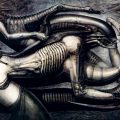

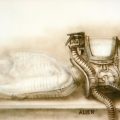
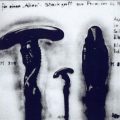

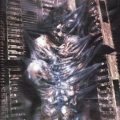
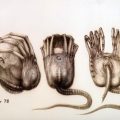
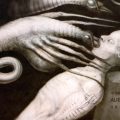
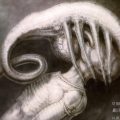
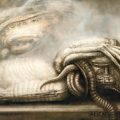

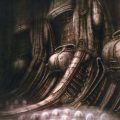
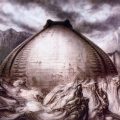
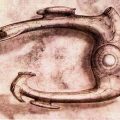
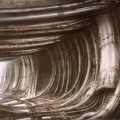
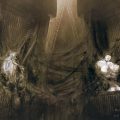
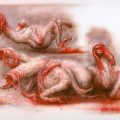
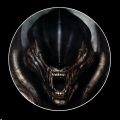

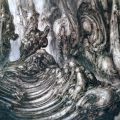


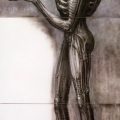
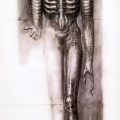
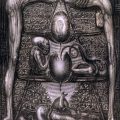


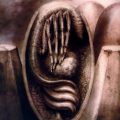




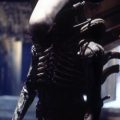
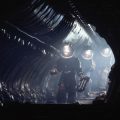




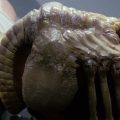
I Like H.R. Giger R.I.P. (1940-2017).